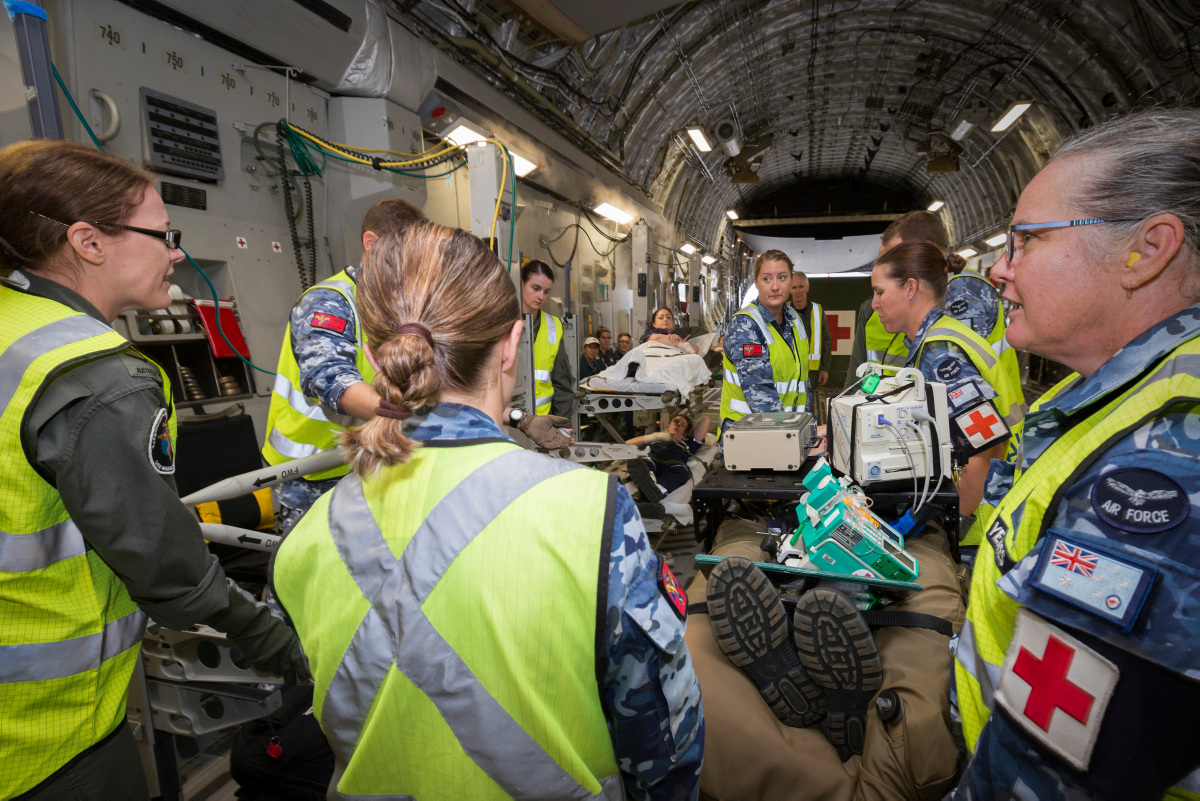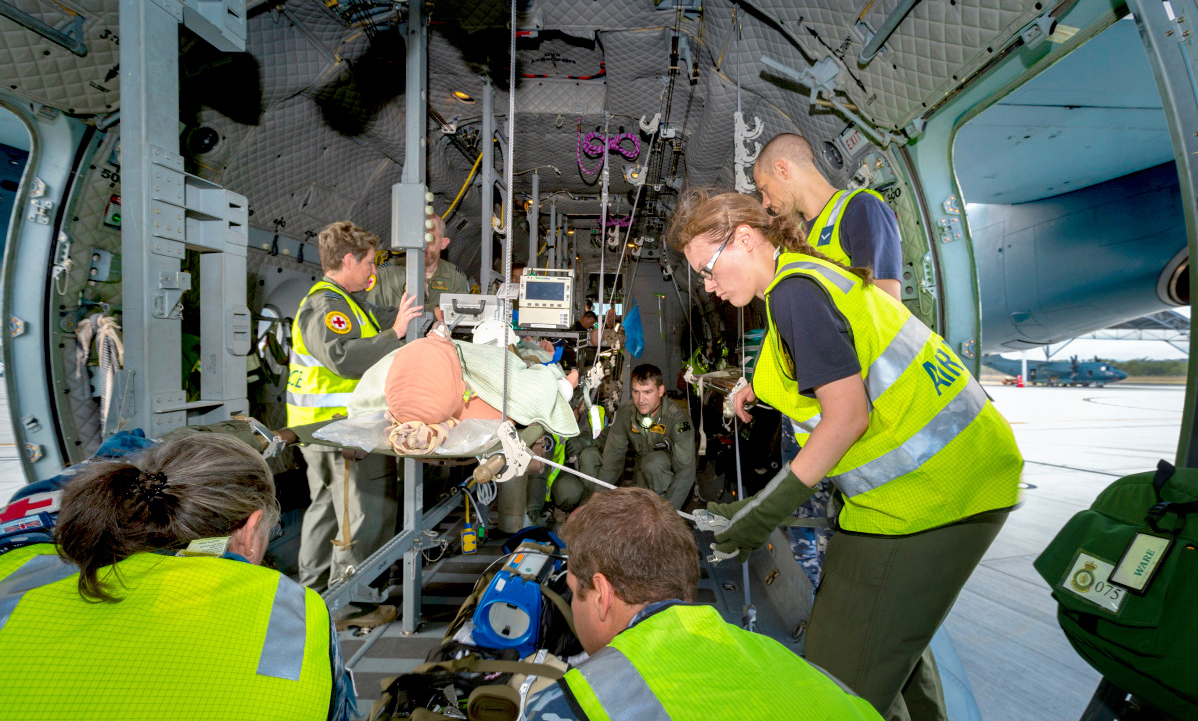Some of Australia’s top doctors and nurses descended on RAAF Base Amberley to hone their skills in the niche field of aeromedical evacuation.
The aeromedical team was given patients to load onto the aircraft, diagnose, treat, and offload to simulate a real-time aeromedical evacuation that may occur in situations such as humanitarian assistance and disaster relief, or on operations in a warlike environment.
There were also simulated multi-casualty scenarios, including a car accident that required surgical intervention, a dental abscess that ended up being an anaphylaxis situation and a presentation of a bilateral fractured femur and pelvis.
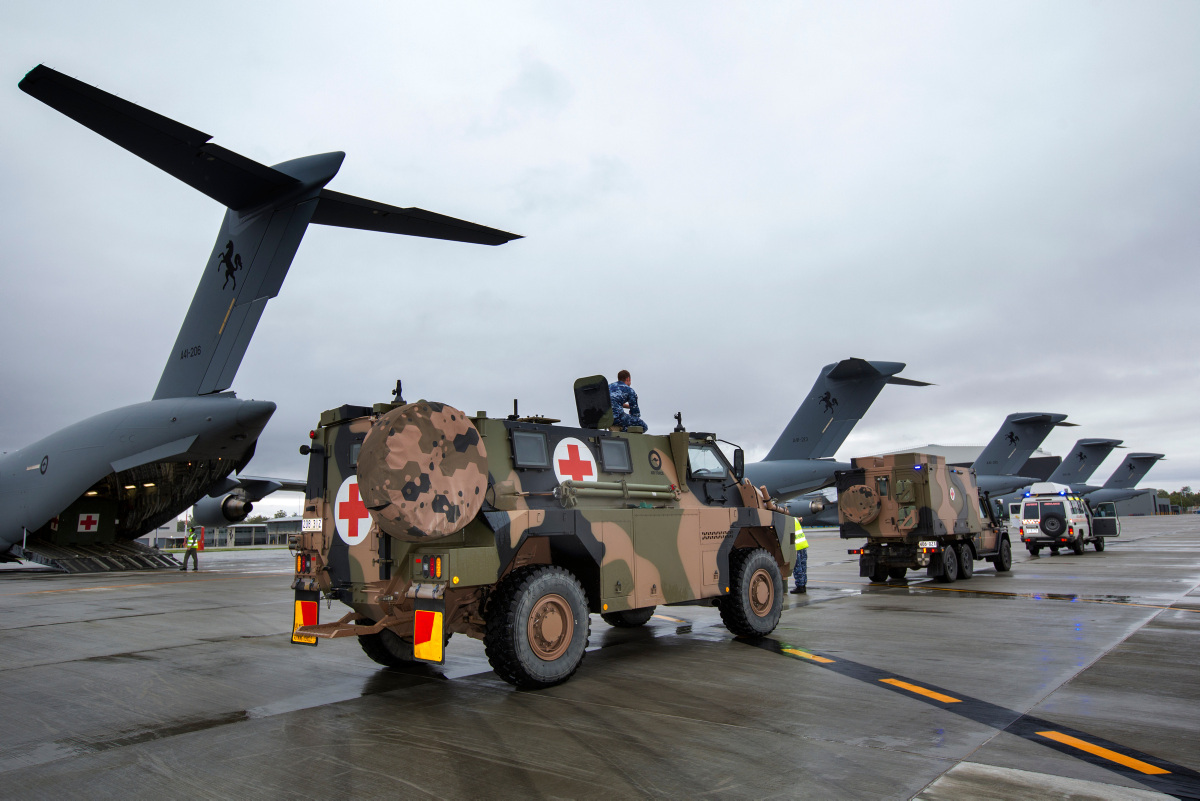
Health Services Wing Officer Commanding Group Captain Kathleen Pyne said it is the biggest combined exercise of the Health Services Wing including personnel from Number 1 Expeditionary Health Squadron (RAAF Base Amberley), Number 2 Expeditionary Health Squadron (RAAF Base Williamtown) and Number 3 Aeromedical Evacuation Squadron (RAAF Base Richmond) and Health Operational Conversion Unit (RAAF Base Amberley).
“It has been fabulous to bring most of our workforce together so everyone gains a good understanding of their part in a deployed environment,” Group Captain Pyne said.
“By coming together on this super base, each of the clinicians from their various specialities are able to work together and see how their role fits into each other’s.”
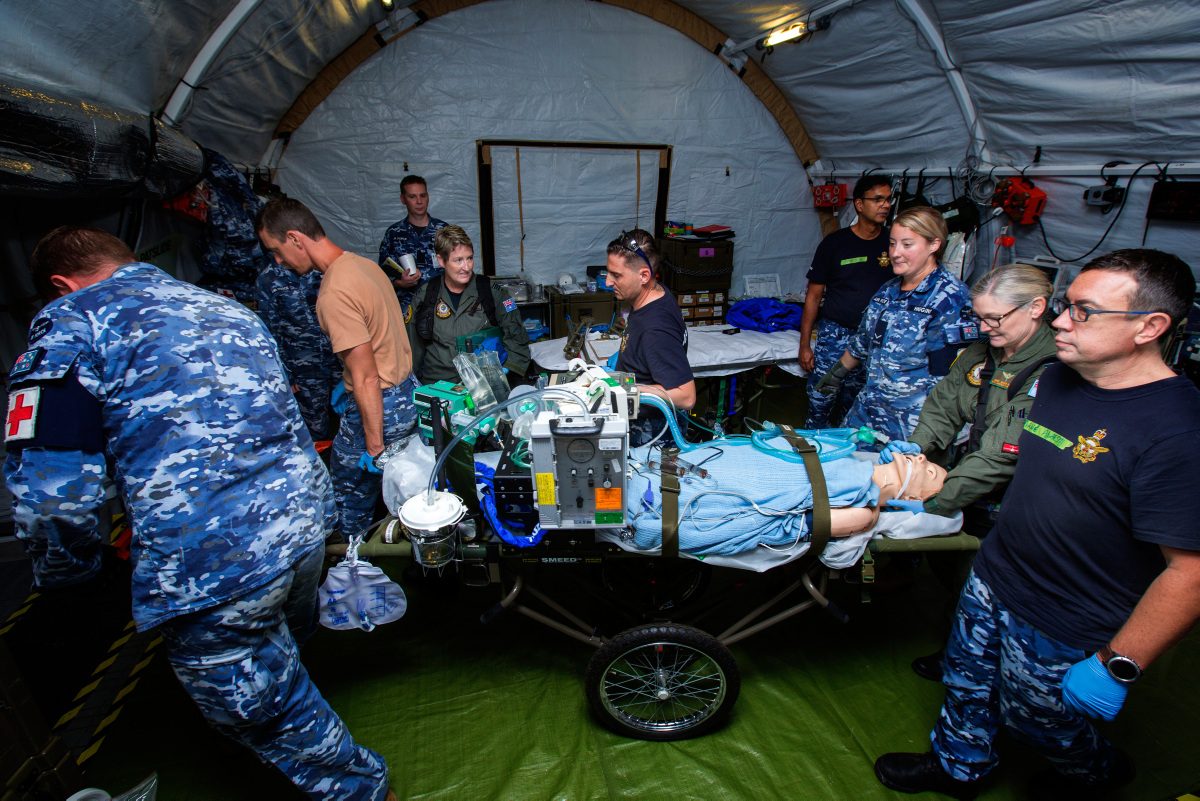
Medical teams are required to set up 31 tents that will house the hospital and primary health care facilities. This included doctors, nurses, pharmacists, radiographers, dentists, laboratory and environmental health officers which is a blend of permanent and reserve personnel.
“We are training for an austere deployed environment which are based on scenarios they may come across in the field. Our team works together and we were able to get the tents up in just two days,” Group Captain Pyne said.
“We have a lot of reservists who were involved in this exercise such as anaesthetist, surgeons, laboratory officers, physiotherapists, mental health specialists and intensive care specialists. This presents a cross pollination of training opportunities. We learn from them and they learn from us.
“We also relied heavily on other Combat Support Group capabilities, particularly the electricians and communications support.”
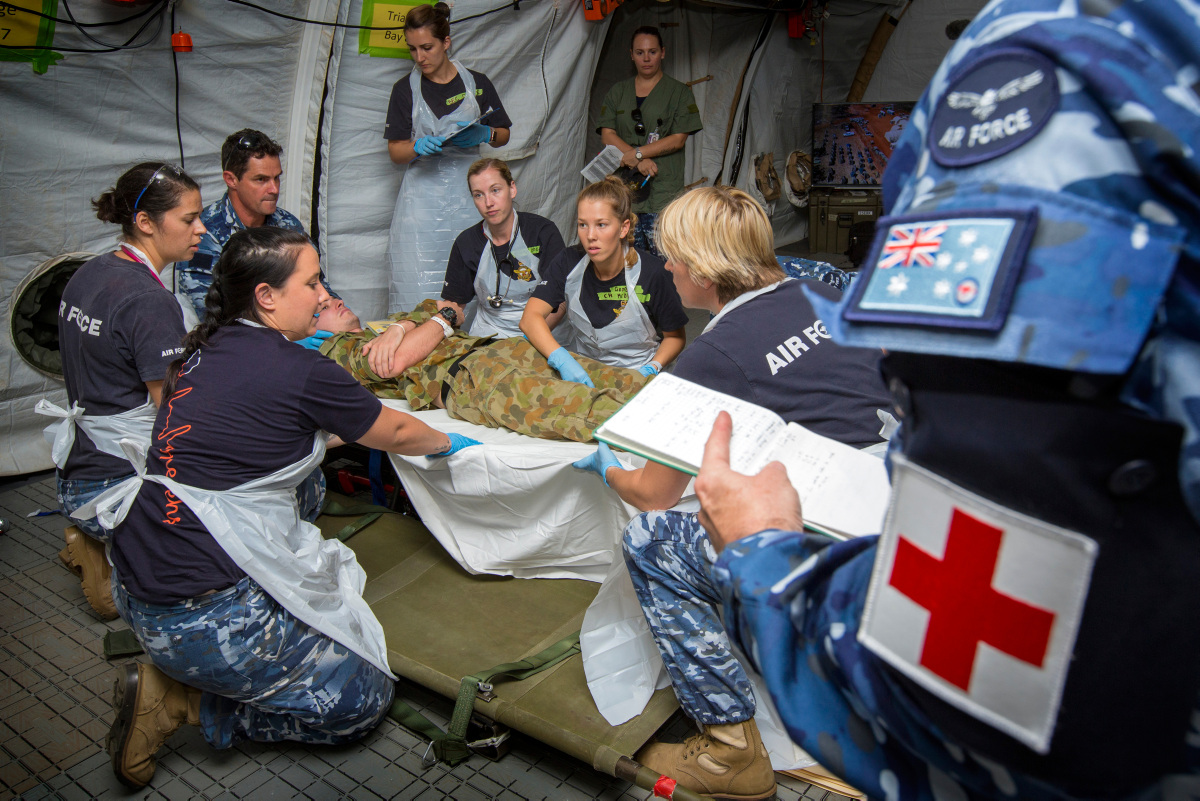
This exercise is being run in conjunction with the Australian Army’s 2nd General Health Battalion who are concurrently conducting their own health exercise, Exercise Giant Viper, at Greenbank.
“The networking has been invaluable and we have been able to enhance each other’s training by working together.”
